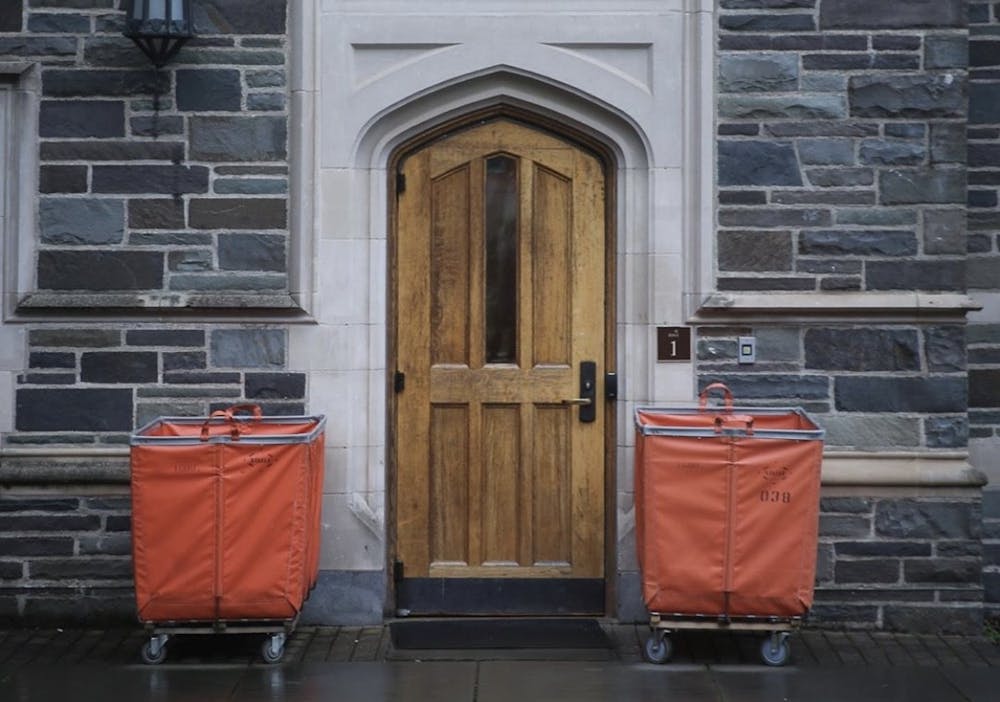Until March 19, most of the University's 5,267 undergraduate students were operating in Eastern Daylight Time (EDT). Now spread across the globe, students are finding various ways to adapt to their new schedules.
“The first week was the hardest week,” says Anne Wen ’22, who is from the territory of Guam. “I remember one day I went to bed at 9 p.m., woke up at midnight to be engaged in a journalism seminar, went to bed at 4 a.m, and then woke up again.”
The next day Wen told her professor: “I just can’t do this anymore; I can’t go to bed, then wake up again, and go back to bed.”
Wen is not the only University student navigating class from a different time zone. According to Tigerbook data, which includes data on the vast majority of undergraduate students, 2,089 undergraduate students live in time zones outside of EDT (UTC-4), each with different levels of disruptions to their class, club, and social schedules. This model does not account for those who still remain on campus.
The following interactive graphic shows how many University students have class during typical sleep hours in their local time, defined as 12 a.m. to 8 a.m. The tool also calculates the number of students who now may have evening classes due to the time zone shift. Evenings are defined as 4 p.m. to 12 a.m.
According to the model, 1,510 students would normally be asleep during the 9:00 a.m. class slot.
However, professors and faculty have made accommodations, offering pre-recorded or alternative class times.
Zhongshu Li GS, a preceptor for a Woodrow Wilson School class on environmental policy, is committed to putting his students as his priority. Li — who lives in Tianjin, China, 12 hours ahead of Princeton — must teach his own precept at 2:30 to 3:30 a.m. after his class could not find an alternative time that worked for the students.

Li has made peace with the late precept times.
“My students are still very engaged,” he said. “It is kind of an interesting experience to have fruitful conversations at 3 a.m.”
Anna Goodman ’23, who lives in Sydney, Australia — a 14-hour time difference from the University — said professors have been “extremely sympathetic" in offering alternative time slots for meetings and interviews.
“One professor created a whole separate precept for me and another student,” Goodman said.
She is one of five students in that time zone, but one of over 450 students living over four hours outside of the University’s time zone. The following graphic shows the number of undergraduates and their hometowns for each UTC (Coordinated Universal Time) timezone.
UTC-4 is by far the predominant time zone, with 3143 students from 1244 cities representing the east coast. The second most populous time zone is UTC-7, which includes 744 students from 291 cities predominantly on the west coast.
Other notable time zones are UTC 0 and UTC +1 which reflect parts of the United Kingdom and continental Europe. Students in time zones UTC +3, and +4 are from countries in the Middle East and Africa. The majority of students in UTC +5 are from India, UTC +8 China, and UTC +9 Japan and South Korea.
UTC +8 and UTC +9 have the exact same ratio of 2.47 students to cities with 84 students from 34 cities, and 47 students from 19 cities respectively. This points to a consistency in admission practices for similar regions.
In comparison, the ratio of students to cities is much lower for countries in continental Europe, scoring 1.15 and 1.48 for UTC+1 and UTC+2 respectively. The ratio is highest in the UTC-4 and UTC-7, time zones, corresponding to the east and west coast, with scores of 2.53 and 2.57.
Overall, time zone data offers a reflection of the makeup of the University student body, and the social challenges for our community.
“Communications with most people have been harder,” Wen said, referring to her attempts to catch up with four other students she used to always eat dinner with at Forbes College. With the group split between three different time zones, “it’s difficult to find a time that works.”
On how time zones have affected her friendships, Wen said, “It has made me value our time together even more.”





